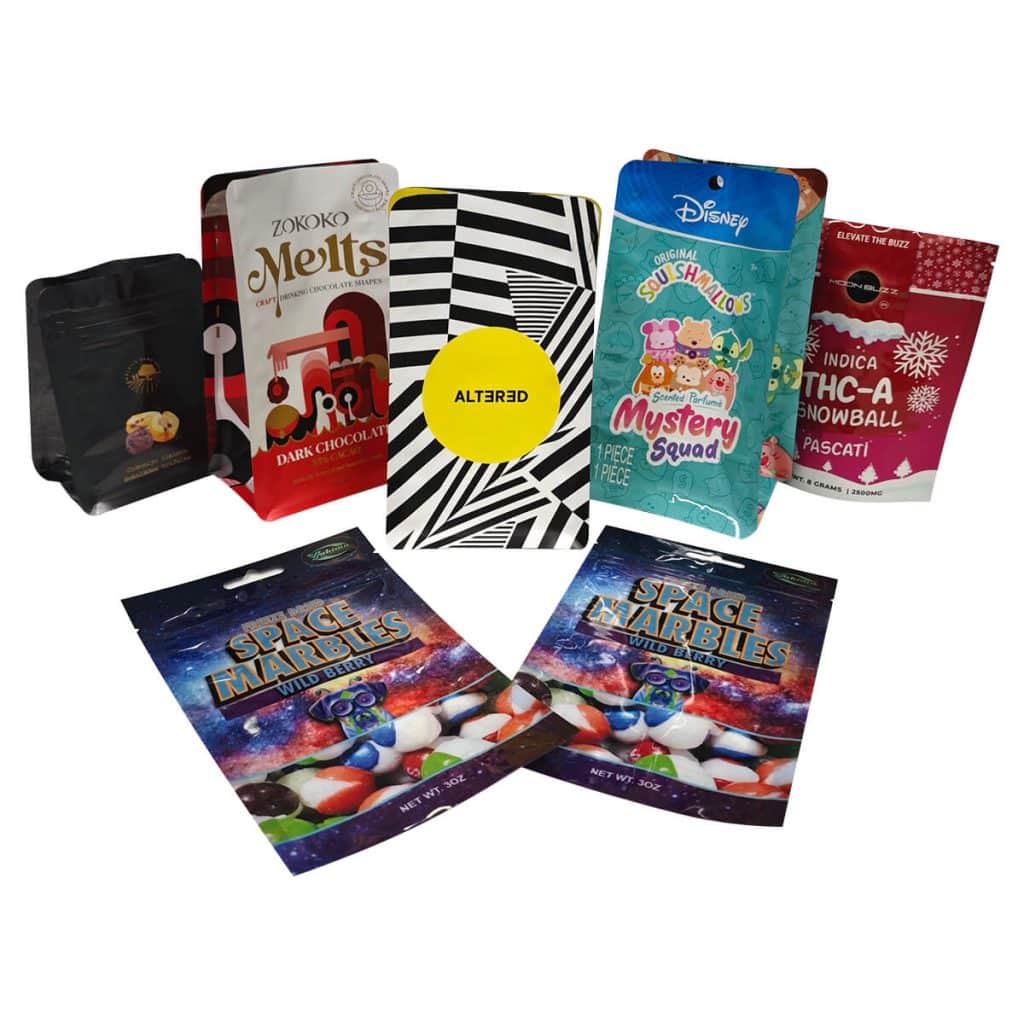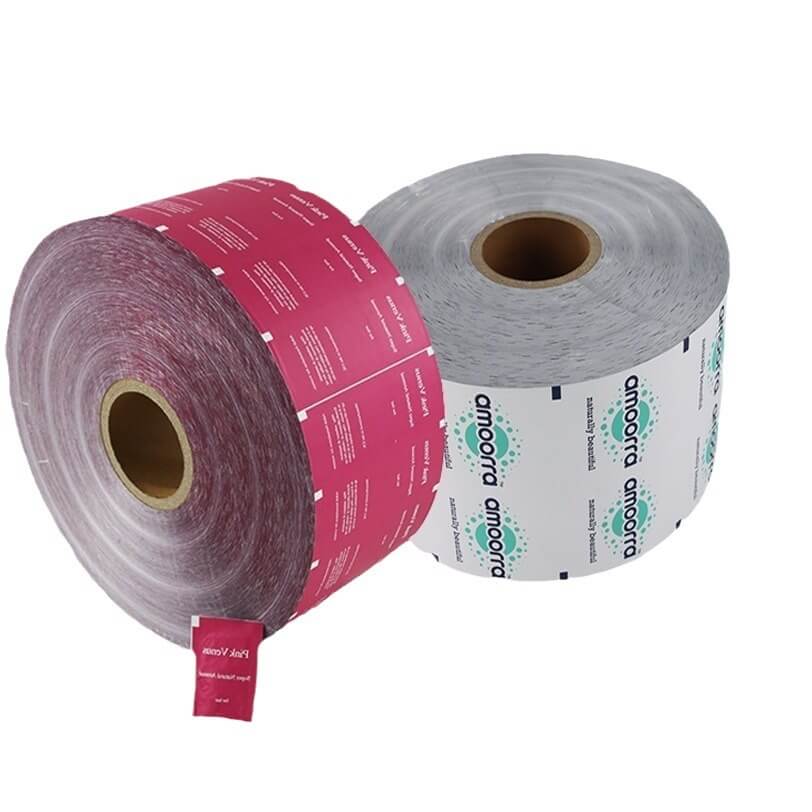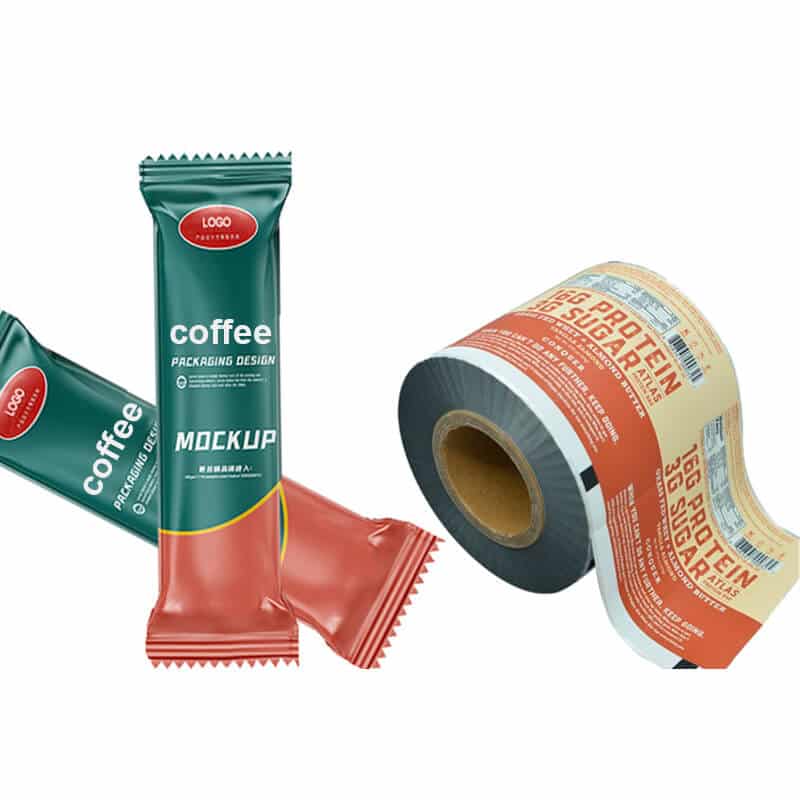High-temperature cooking packaging bags
High-temperature cooking packaging bags are a particular packaging material used extensively for heating and cooking food, such as instant noodles, rice, and vegetables. These packaging bags typically comprise multiple layers of composite materials, including polyamide (PA) film, reinforcing layers, and sealing layers.
These packaging bags can protect food at high temperatures while preventing bursting or water leakage.
In fact, producing and developing high-temperature cooking packaging bags is a relatively complex engineering process. This packaging material must meet strict quality standards to ensure food is not contaminated or damaged during heating.
One of the main issues is the material selection. Materials with high-temperature resistance must be used because food needs to undergo high-temperature cooking, considering wear resistance, tensile strength, and other factors.
The manufacture of high-temperature cooking packaging bags usually adopts a solvent-free, eco-friendly process and comprises multiple layers. Different materials are mixed in a particular proportion and composited at high temperatures and pressures to form a sizeable composite film; then, this film is processed into packaging bags with specific shapes and sizes and sealed.
Advantages of high temperature cooking bag
In practice, high-temperature cooking packaging bags have many benefits.
Firstly, this bag can effectively prevent food from being damaged or contaminated. Secondly, it is very convenient to use and can significantly reduce the heating time for food.
In addition, high-temperature cooking packaging bags are eco-friendly, as they can reduce the amount of traditional plastic packaging materials used.
In conclusion, high-temperature cooking bags are high-end packaging materials with many advantages. As people pay more attention to food safety and environmental protection, this packaging material will be more widely used.
Vacuum Packaging
Regarding vacuum packaging, the bag’s material is a crucial factor to consider.
A high-quality vacuum-sealing bag can help prolong the shelf life of your food, protect it from freezer burn, and keep it fresh for longer.
Materials
One of the most popular materials used for vacuum packaging bags is polyethylene. This plastic material is commonly used due to its excellent strength and durability, which makes it ideal for withstanding the demands of the vacuum sealing process.
Additionally, polyethylene is a safe and non-toxic material that does not release harmful chemicals when exposed to high temperatures.
Another material used for vacuum sealing bags is nylon. These bags are highly resistant to punctures, tears, and abrasions, making them a popular choice for storing sharp or pointed items.
Nylon bags are also flexible and can easily conform to the shape of the food item being stored, ensuring a tight seal that keeps out air and moisture.
Lastly, there are also vacuum sealing bags made from laminated materials, which combine polyethylene’s strength with nylon’s barrier protection. These bags are particularly effective at preventing the transfer of oxygen, moisture, and other contaminants into the food item, providing freshness and safety.
Overall, the material of your vacuum sealing bag is an important consideration when preserving the quality of your food. Choosing a sack made of a suitable material ensures that your food stays fresh and delicious for as long as possible.
Different Types of Vacuum Packaging Bags
Vacuum packaging bags can be classified into several types based on their use and material composition. Here are some examples:
1. Polyethylene (PE) vacuum bags: These bags are made from a type of plastic that is durable and resistant to moisture and punctures. They are ideal for packaging food products such as meat, fish, and cheese. PE bags can come in different sizes and thicknesses to suit various packaging needs.
2. Nylon vacuum bags: These are made from a robust and puncture-resistant material that can withstand high temperatures and pressure. They are commonly used for packaging delicate or fragile items such as electronic components, medical devices, or artwork.
3. Aluminum foil vacuum bags: These bags are made from a combination of plastic and aluminum foil layers, which provide excellent barrier properties against air, moisture, and light. They are often used for packaging food items that need to be preserved for extended periods, such as coffee, dried fruits, or snacks.
4. Vacuum seal rolls: These are long sheets of vacuum bag material that can be cut to desired lengths and sealed on one end using a vacuum sealer machine. They are versatile and can be used for packaging various items like clothes, bedding, or documents.
In conclusion, vacuum packaging bags come in different types and materials, each suited for various packaging requirements. Choosing the correct type of bag to suit your packaging needs is crucial in ensuring the quality and longevity of your packaged goods.
Daily Usage of the Vacuum Bags
A high-temperature cooking bag and vacuum bag are used for packaging all kinds of meat-cooked food; they are easy to use and hygienic.
Material: NY / PE, NY / AL / RCPP, KNY / PE
Characteristics: moisture-proof, temperature resistance, shading, fragrance preservation, strong toughness
Applicable to: high-temperature sterilized food, ham, curry, grilled eel, fish, and meat brine products.
Typical construction of the boiled bag
PET/PE BOPA/PE PET/AL/PE
Product Features
- Can withstand a temperature not higher than 106℃, no stratification, no leakage.
- High thermal sealing strength, good puncture resistance, and high impact resistance strength.
- With good printability and beautiful printing.
- Good oil resistance
All kinds of water-boiled food packaging.
Independent bag is not easy to deform, can be placed in the bag, separate bag scope of application:
(1) Daily chemicals (laundry detergent, softener, various supplementary kits)
(2) Pet food (dog, cat, etc.)
(3) Food (puffed food, rice, dried fruit, chestnut bags, and other cooking bags)
(4) Healthcare products (tea and powder granules)
Independent bag product features:
(1) Good standing ability
(2) Good pressure resistance and leakage prevention
(3) Strong impact resistance
(4) Can withstand high-temperature cooking
At present, the leading independent bag materials produced are:
(1) ONY/LLDPE
(2) PET/AL/LLDPE
(3) PET/ONY/LLDPE
(4) PET/CPP
(5) ONY/CPP
(6) PET/VMPET/LLDPE
(7) OPP/VMPET/LLDPE
(8) Other particular material structure independent bag products
Aluminum foil bag packaging usually refers to aluminum-plastic composite vacuum packaging bags; such products are suitable for large precision mechanical equipment, chemical raw materials, and pharmaceutical intermediates, moisture-proof, light, and vacuum packaging.
More four-layer structures with good water and oxygen function. Unlimited, you can customize different specifications and styles of packaging bags, which can be made into a flat pocket, three-dimensional bag, organ bag, and other types. The products shall be tested by GB and ASTM standards, the products meet environmental protection requirements (the third-party test report can be provided), and the products meet the most stringent environmental standards for packaging materials in the European Union and North America.
(1) Use of high-pressure polyethylene plastic bags:
A. Food packaging: cakes, candy, fried goods, biscuits, milk powder, salt, tea, etc.;
B. Fiber packaging: shirts, clothing, needle, and cotton products, chemical fiber products;
C. Daily chemical products packaging.
(2) Use of low-pressure polyethylene plastic bags:
A. Garbage bag, bacteria bag;
B. Convenient bags, shopping bags, handbags, vest bags;
C. freshness protection package;
D. Woven bags inside bags
(3) Use of polypropylene plastic bags:
They are mainly used to package textiles, needles, cotton products, clothing, shirts, etc.
(4) Use of PVC plastic bags:
A. a gift bag;
B. Bags and bags, needle and cotton packaging bags, cosmetics packaging bags;
C. (Zip type) file bag, data bag.






